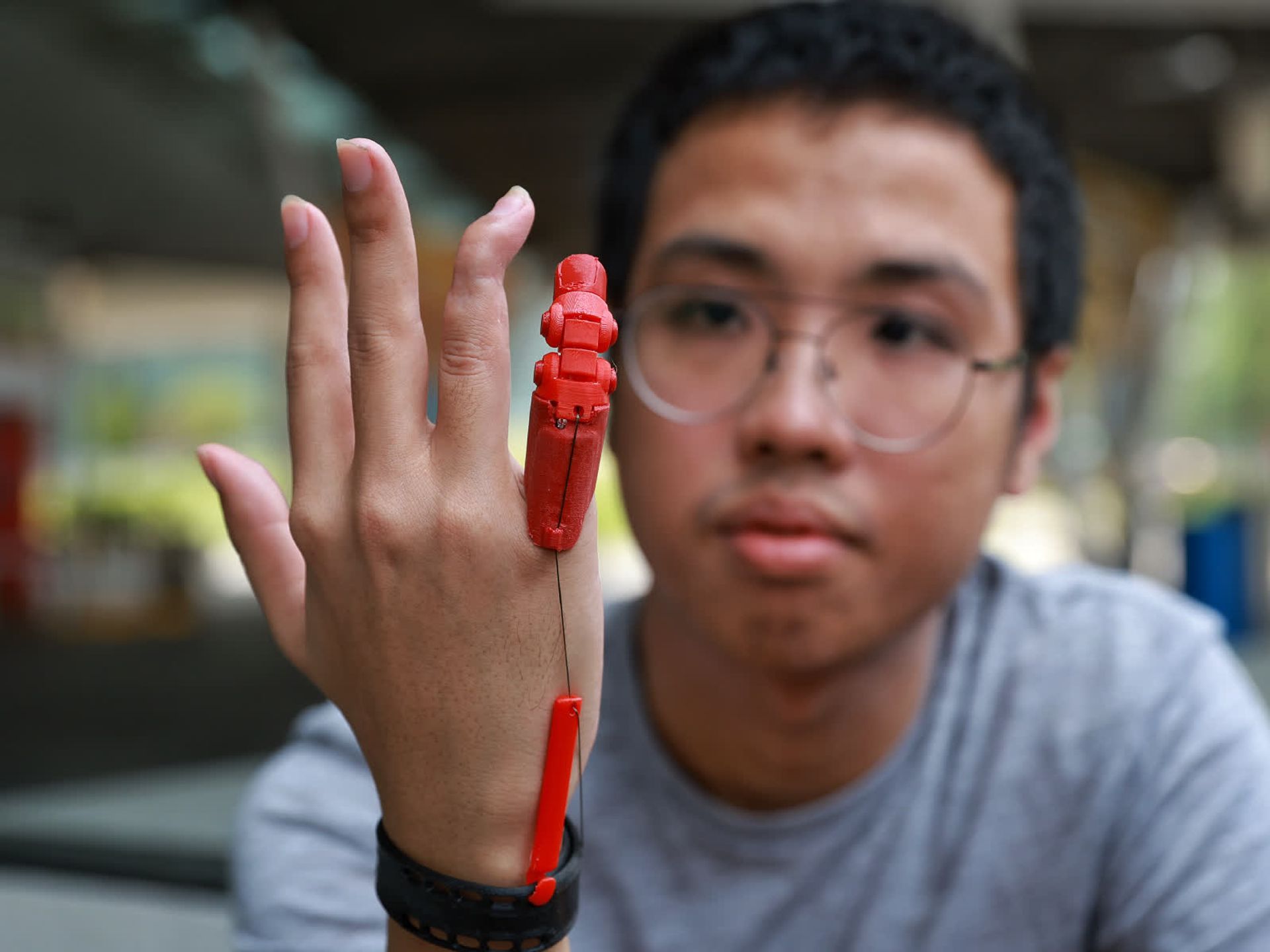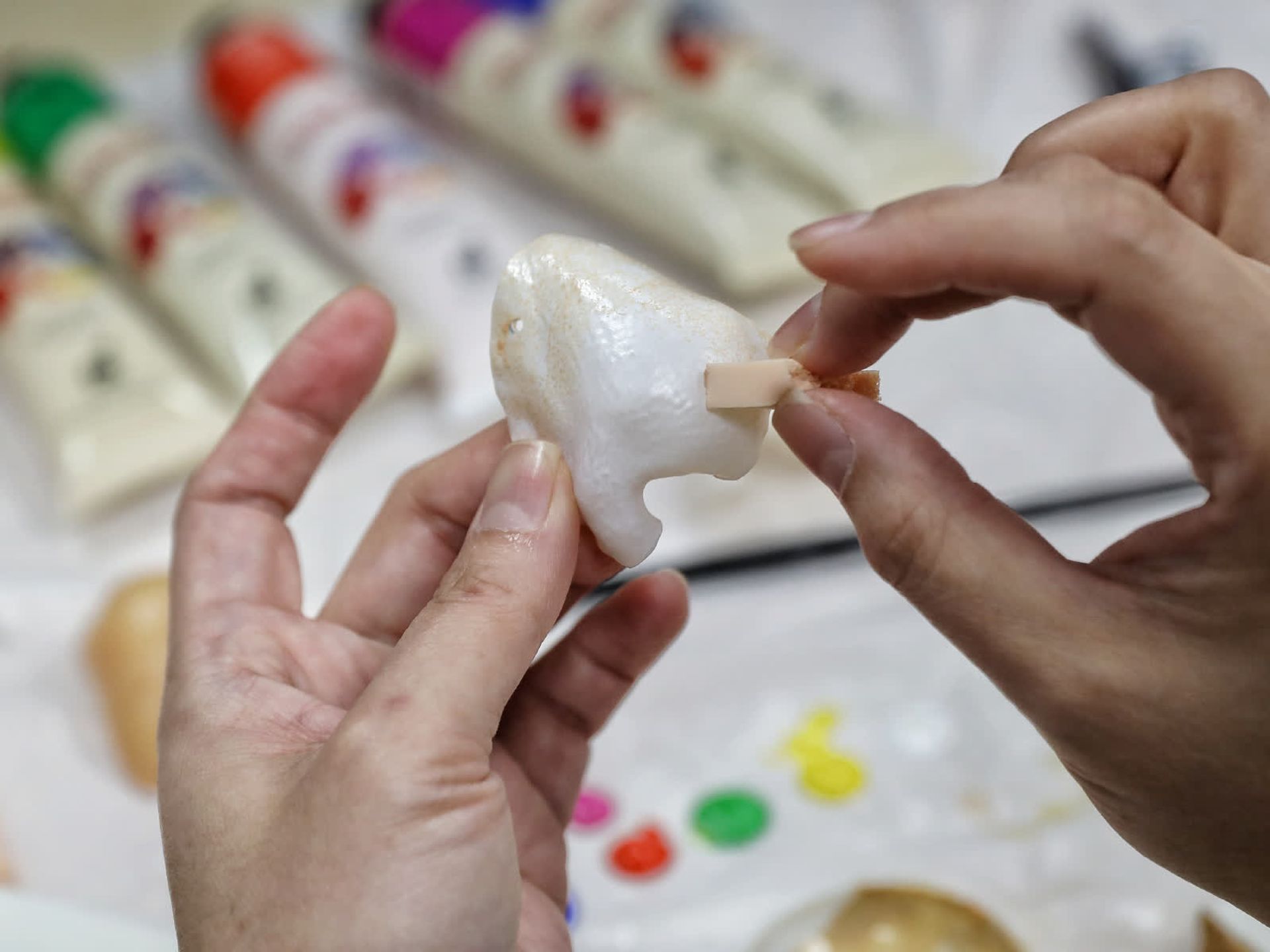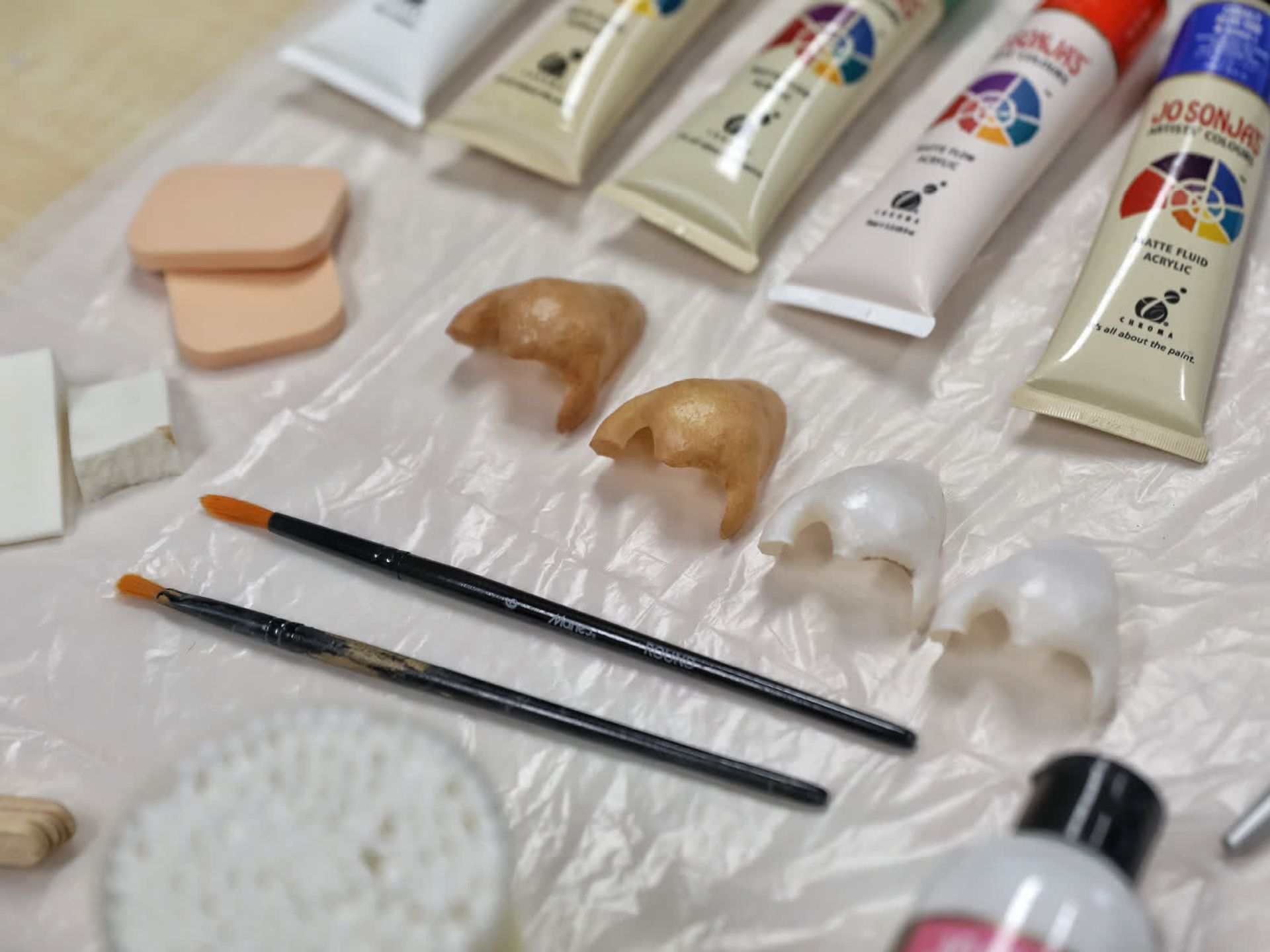Mr Lian’s was the primary prosthetic nostril created by a crew of docs and 3D-printing engineers that has been pushing medical boundaries at TTSH.
Main the crew behind this ground-breaking mission was Dr Michael Yam, an orthopaedic surgeon and head of TTSH’s Medical 3D Printing Centre that formally opened in November 2022.
The centre prints fashions of sufferers’ organs from medical scans to assist docs higher clarify situations and coverings to sufferers. Engineers from Medairum are seconded to the centre to take care of 3D printing jobs. Medairum, which specialises in medical 3D printing, was one of many firms licensed to fabricate 3D-printed Covid-19 swabs throughout the early levels of the pandemic.
3D printing a prosthetic nostril for Mr Lian was a pilot mission for the centre. They designed the prosthesis to look virtually similar to his unique nostril.
“When he had his last becoming, I felt so happy as a result of it felt like I used to be returning one thing to him,” mentioned Dr Yam, who has been experimenting with 3D printing know-how since 2019.
I felt so happy as a result of it felt like I used to be returning one thing to him.
“It was very fulfilling to see Mr Lian completely happy carrying the nostril and being snug not carrying a masks,” mentioned Medairum basic supervisor Nirodha Ariyaratne. “Though there have been challenges in getting the becoming proper, as soon as that lastly got here into place it was very fulfilling for me.”
The success of this pilot mission paved the best way for different custom-made prosthetic tasks for TTSH’s 3D printing centre. Since then, TTSH has additionally labored on two different main tasks – a purposeful finger prosthesis and a cranial cap.
Prostheses or synthetic physique components may also help sufferers regain each perform and self-confidence.


The recipient of the purposeful finger is 21-year-old Russel Ko, who misplaced his finger in a street accident in 2022. The prosthesis restored his capacity to carry out every day actions and allowed him to “really feel regular” once more.
The crew additionally created cranial caps for sufferers awaiting cranium reconstructive surgical procedure after having a portion of their skulls eliminated following a stroke or accident, worn to guard the mind.
The designs of 3D-printed prosthetics are tweaked primarily based on every affected person’s necessities.
Mr Lian’s nostril prosthesis required greater than seven iterations. The nostril mannequin might sit completely in pc modelling, however might not match nicely in actual life, explains Dr Yam. The crew took pains to check if the nostril was snug for Mr Lian to make use of for longer durations, and the way it sits when he strikes or does numerous actions.
The crew experimented with completely different supplies. They wished one thing biocompatible, in order that the 3D print wouldn’t trigger any pores and skin allergy symptoms or poisonous results. The fabric additionally needed to be licensed by regulatory our bodies like the US’ Meals and Drug Administration and the Well being Sciences Authority in Singapore. Given these issues, they settled on utilizing a surgical information resin, which is usually used for dental prostheses.
The ultimate product was a 12g prosthetic product of surgical information resin. Right here’s the way it was printed.
The 3D-printing method used known as stereolithography, which builds up a construction layer by layer utilizing a liquid resin that hardens when uncovered to UV gentle. Printing Mr Lian’s prosthetic nostril took about an hour.
Subsequent, the 3D print is taken out of the printer and soaked in isopropyl alcohol to take away extra resin.
The 3D mannequin is then put in a curing machine, the place it hardens underneath UV gentle.
Lastly, it goes by means of trimming, sanding and sprucing earlier than it’s prepared for portray.
The following hurdle? Getting the 3D print to match Mr Lian’s pores and skin tone.
The crew roped in beauty consultants – Ms Jessie Goh and Madam Ho Ee Na – from the Institute of Technical Training (ITE) for this problem. Ms Goh, who’s the part head of the wonder and wellness course in ITE Faculty East, has years of expertise doing stage and particular results make-up. Nonetheless, portray a prosthesis was new to her and he or she nervous whether or not she could be as much as the problem.
“The sort of work we do is supposed to final just a few hours or a day, however this nostril is for every day use,” mentioned Ms Goh.
The duo met Mr Lian 5 occasions on the Medical 3D Printing Centre to work on getting the correct pores and skin tones, mixing layers of skin-safe acrylic paint to get a light-weight beige color that matched his face.
“It’s very completely different,” mentioned Madam Ho. “Once we do make-up, we mix color on an individual’s pores and skin. The paint sits very in another way on the prosthetic nostril.”


Their efforts paid off. ITE Faculty East is now a accomplice of TTSH’s 3D printing centre, to offer beauty companies for its prostheses.
The school is planning so as to add these tasks to its present curriculum, the place college students from its magnificence and wellness course can work on future 3D-printed prosthesis. “We wish to inform them that as a make-up artist and with the abilities that they study, they will truly assist individuals to realize again their confidence,” mentioned Ms Goh.
Finally, the long run aim is to scale up and make medical 3D printing mainstream in Singapore.
3D printing is usually a answer to many medical issues, mentioned Dr Yam. “We wish to make 3D printing extra accessible to sufferers.”
The following step for the centre is to look right into a pricing mannequin to make these prostheses out there to sufferers who might have it. This may also permit the centre to be sustainable in the long term. One consideration for costing is making certain that it may be subsidised, similar to different orthotics and prosthetics.
Regardless of TTSH’s success in Mr Lian’s case, Singapore nonetheless has an extended technique to go in medical 3D printing. There are greater constancy forms of 3D prints, comparable to implantables and customised plates, that TTSH has but to discover.
“We wish to turn out to be the usual of care and we are attempting to emulate what Mayo Clinic is doing within the US,” Dr Yam mentioned, referring to the non-profit American educational medical centre’s forays into 3D printing. “Someday, we want to have the ability to replicate its 3D printed point-of-care implantables capabilities as nicely.”
Medairum’s Mr Nirodha added: “You additionally want the regulatory our bodies to come back in and actually set down the panorama for this know-how adoption. All types of rules must be in place, and certifications must be in place so it turns into a secure know-how for use on sufferers. It’s at the moment taking place.”